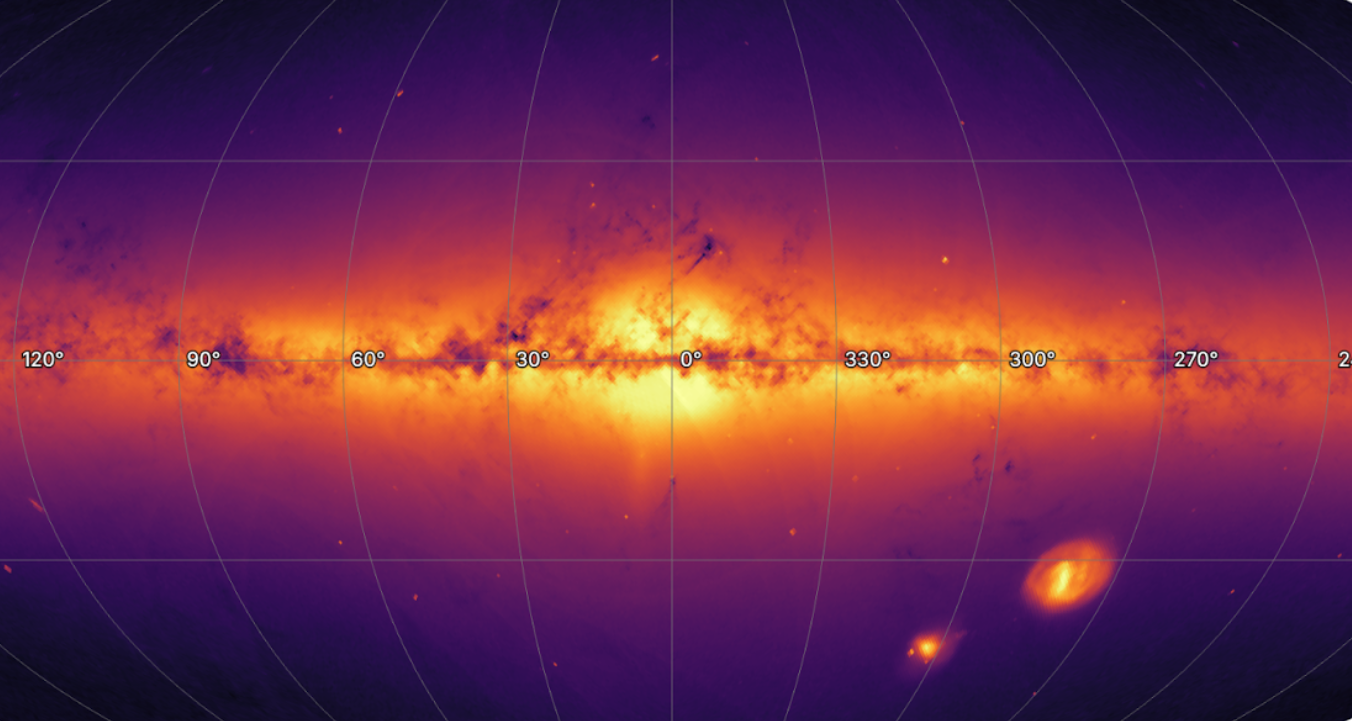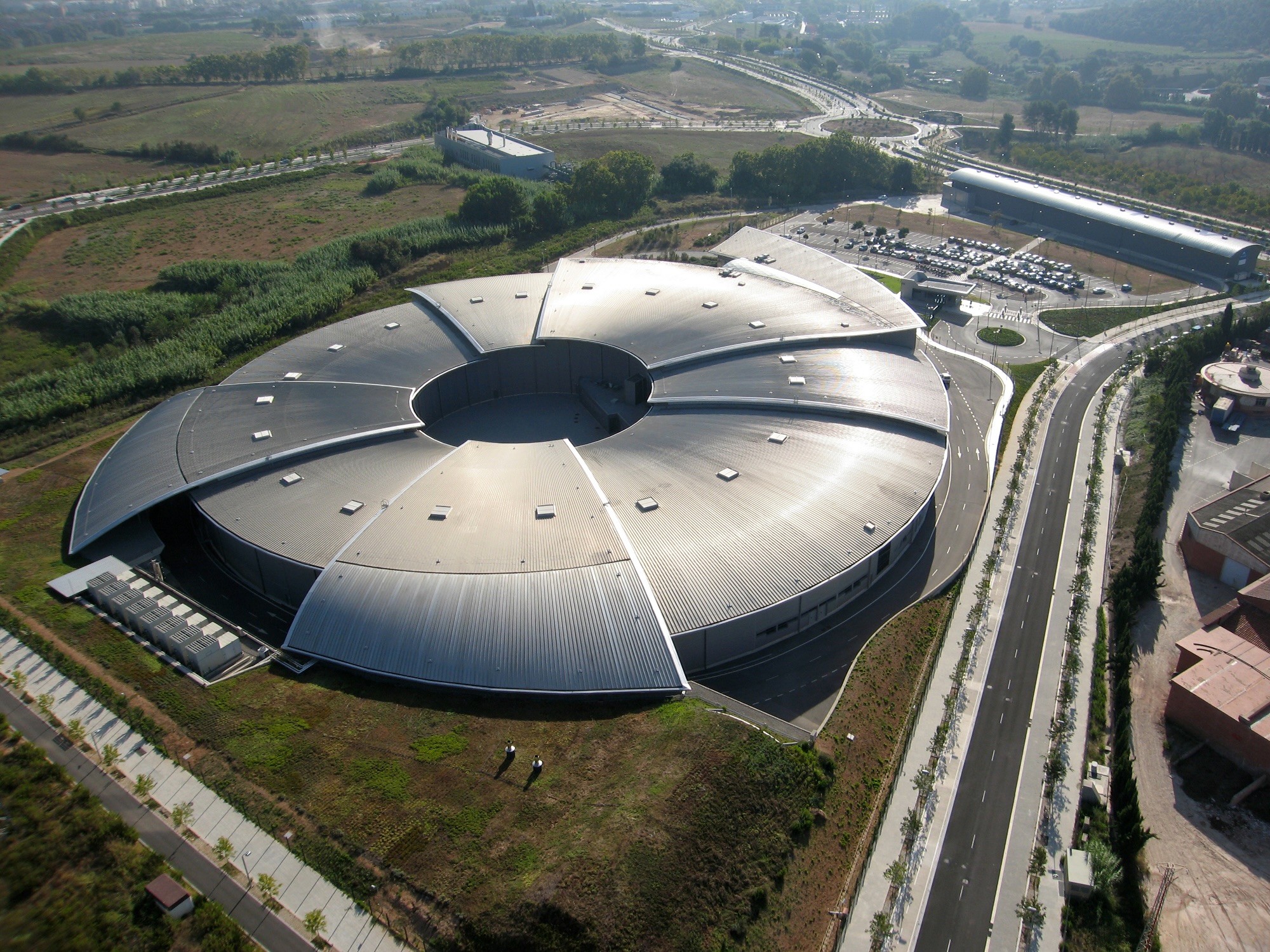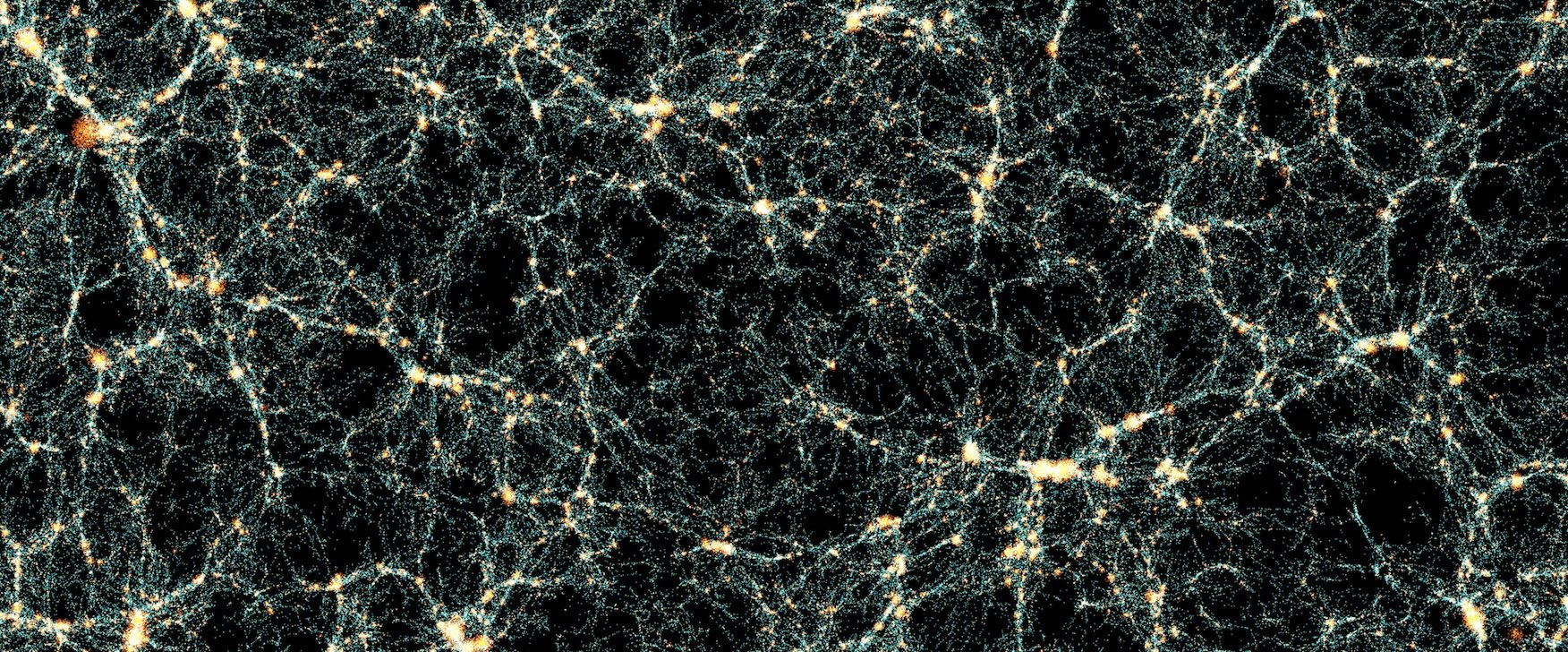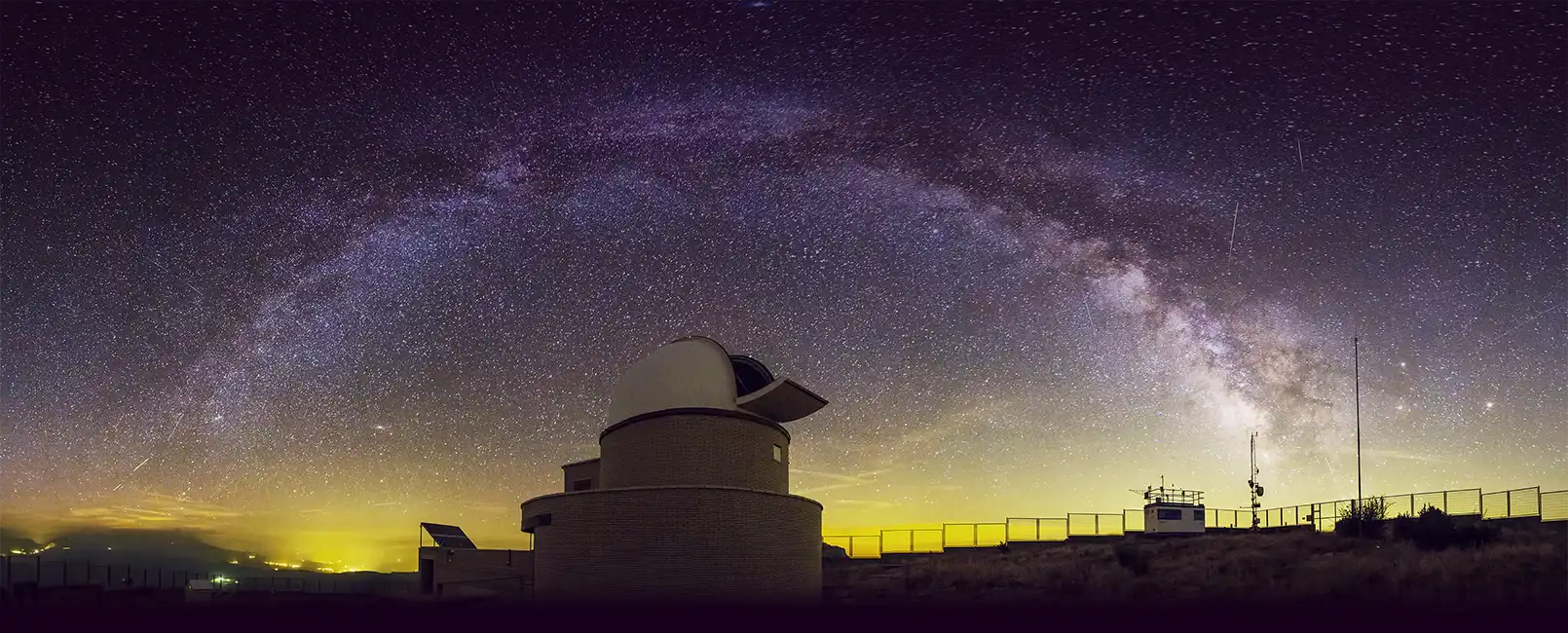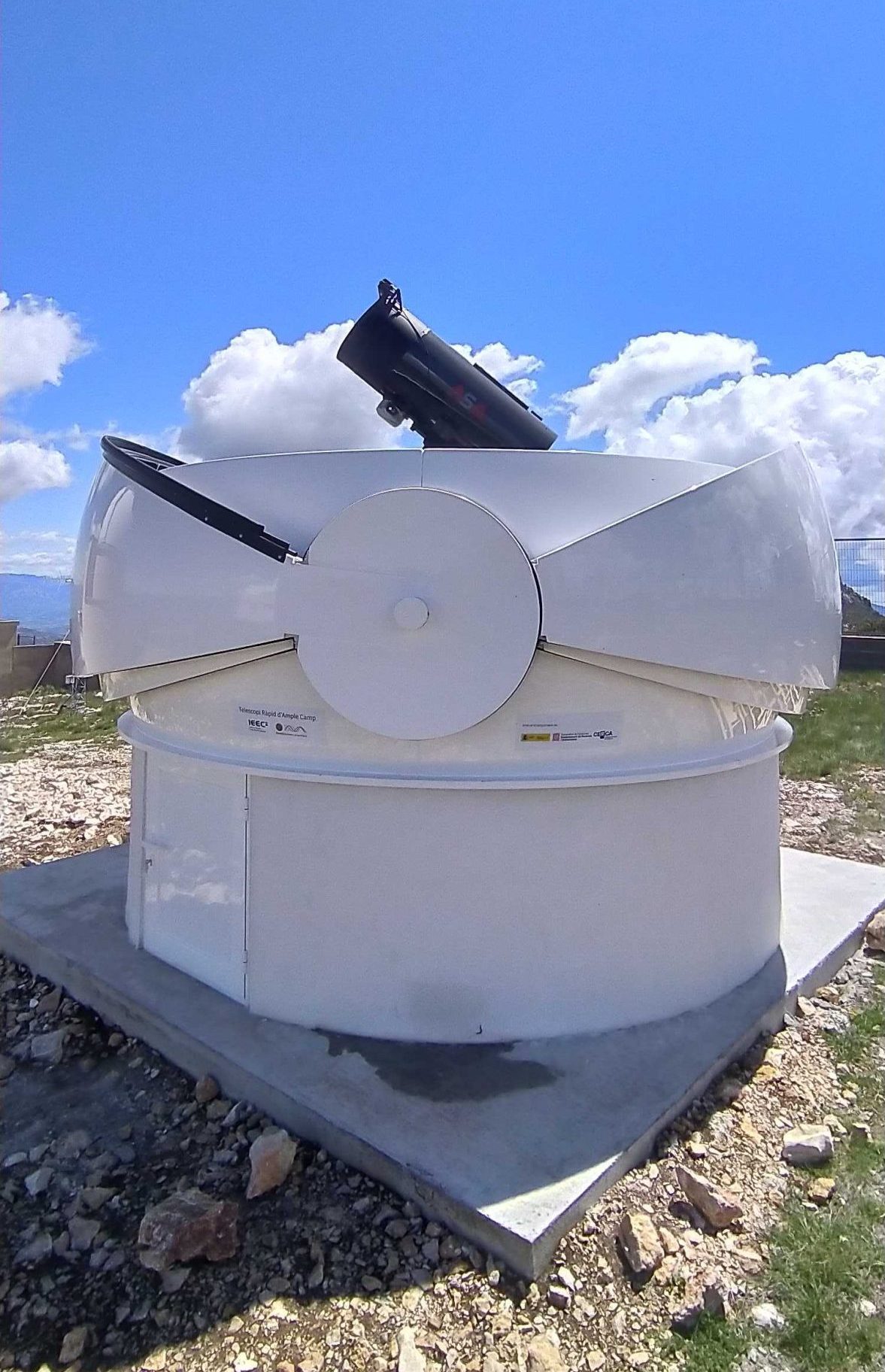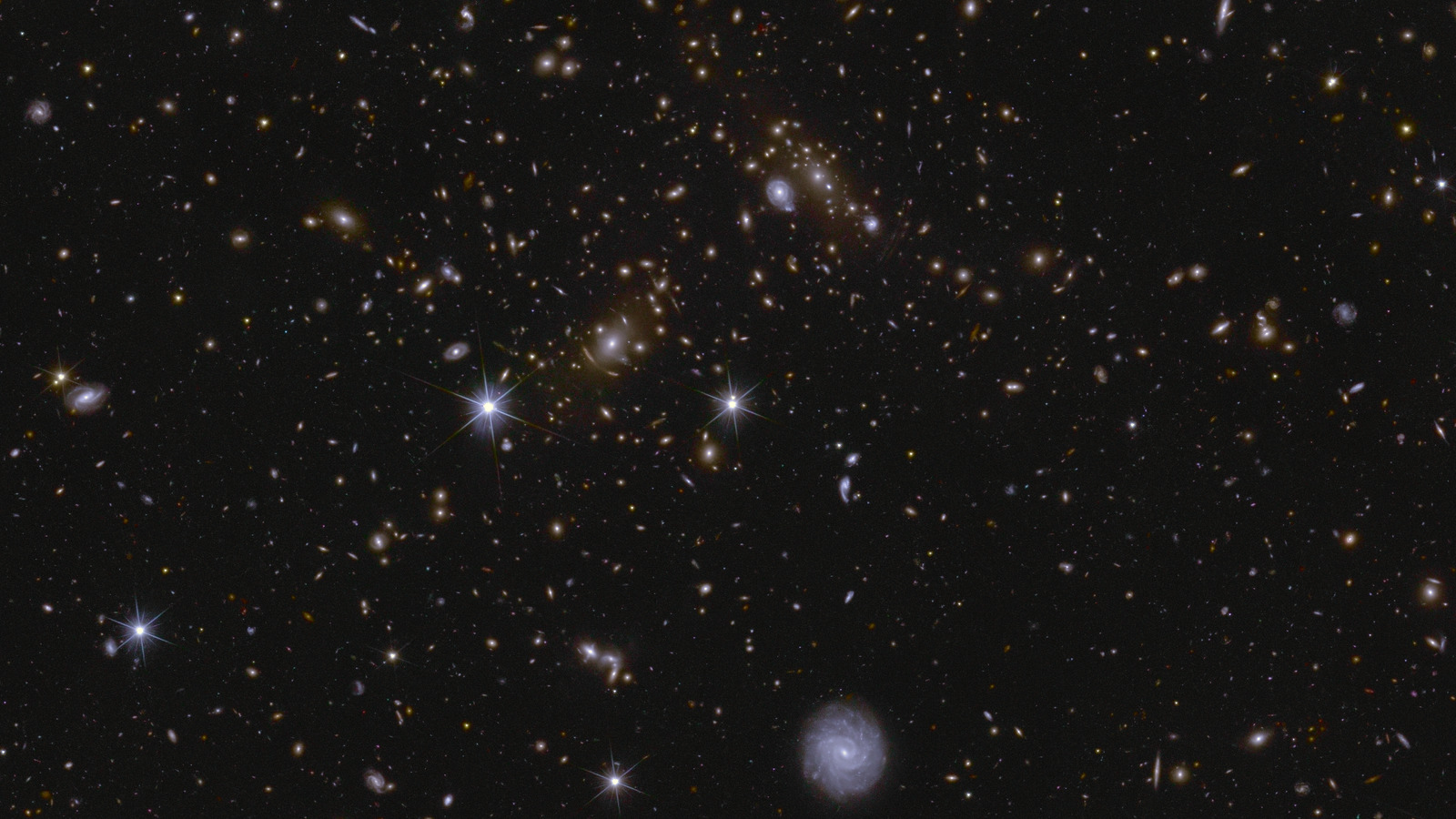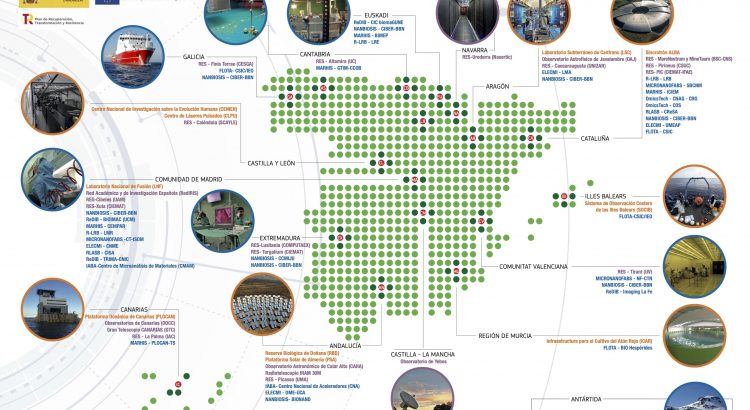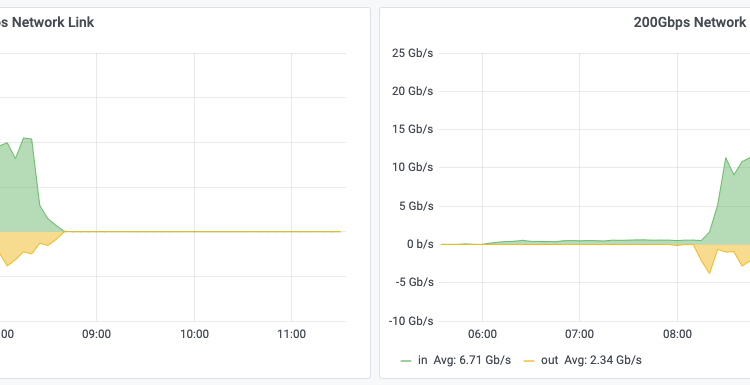ESA’s Euclid space mission, launched on 1 July, finally reveals its first full-colour images of the cosmos. Never before has a telescope been able to create such razor-sharp astronomical images across such a large patch of the sky, and looking so far into the distant Universe, up to distances of 10 billion light years. These five images illustrate Euclid’s full potential and show that the telescope is ready to create the most extensive 3D map of the Universe yet.
The Spanish contribution to the payload of the Euclid telescope has been organised around two poles that joined the scientific consortium in 2010. On the one hand, the Institute of Space Sciences (ICE-CSIC), the Institute of High Energy Physics (IFAE), the Institute of Space Studies of Catalonia (IEEC) and the Scientific Information Port (PIC), which is a collaboration between IFAE and Centro de Investigaciones Energéticas, Medioambientales y Tecnológicas (CIEMAT), have been responsible for the design, construction, assembly and validation tests of the NISP instrument filter wheel, as well as the cosmological simulations of the mission. On the other hand, the Polytechnic University of Cartagena (UPCT) and the Instituto de Astrofísica de Canarias (IAC), have been in charge of the electronic unit that controls the NISP instrument and its startup software, besides participating in several teams to prepare the scientific exploitation of telescope data. Furthermore, in more than 20 Spanish institutions there are around 100 scientists arranging the scientific exploitation of the mission to unravel the mysteries of the dark universe. The mission aims at investigating dark matter and dark energy, that make up 95% of our cosmos. Its nature has not been unravelled yet, because their presence causes only very subtle changes in the appearance and motions of the things we can see. To reveal the influence of dark matter and dark energy on the visible Universe, over the next six years Euclid will observe the shapes, distances and motions of billions of galaxies out to 10 billion light-years. By doing this, it will create the largest cosmic 3D map ever made. What makes Euclid’s view of the cosmos special is its ability to create a remarkably sharp visible and infrared image across a huge part of the sky in just one sitting.
“We have been involved in the design and development of the infrastructure that finally transforms raw data into these beautiful images for more than 10 years. The work has been done by a small but very motivated group under sometimes challenging circumstances. It is extremely satisfying to see these first results and knowing that there will be some very exciting scientific discoveries.”, says Christian Neissner, the coordinator of the Spanish Scientific Data Center (SDC-ES), which forms part of the Euclid Scientific Ground Segment. The SDC’s work in collaboration with the Cosmological Simulations Science Working Group (CSWG) and the Simulation Organisation Unit (OU-SIM) is fundamental for the analysis of the images and spectra obtained by the Euclid instruments.
Jorge Carretero, the SDC contact to the CSWG, adds: “Absolutely thrilled to see the first images from the Euclid telescope showcasing its full capabilities and the operation of the instruments. After over a decade of dedication and being a part of the collaboration and various working groups, this moment is truly a career highlight”.
“Dark matter pulls galaxies together and causes them to spin more rapidly than visible matter alone can account for; dark energy is driving the accelerated expansion of the Universe. Euclid will for the first-time allow cosmologists to study these competing dark mysteries together,” explains ESA Director of Science, Professor Carole Mundell. “Euclid will make a leap in our understanding of the cosmos as a whole, and these exquisite Euclid images show that the mission is ready to help answer one of the greatest mysteries of modern physics.” “I wish to congratulate and thank everyone involved with making this ambitious mission a reality, which is a reflection of European excellence and international collaboration. The first images captured by Euclid are awe-inspiring and remind us of why it is essential that we go to space to learn more about the mysteries of the Universe,” says ESA Director General Josef Aschbacher.
Zoom into the Universe through Euclid’s eyes
The Perseus Cluster of galaxies
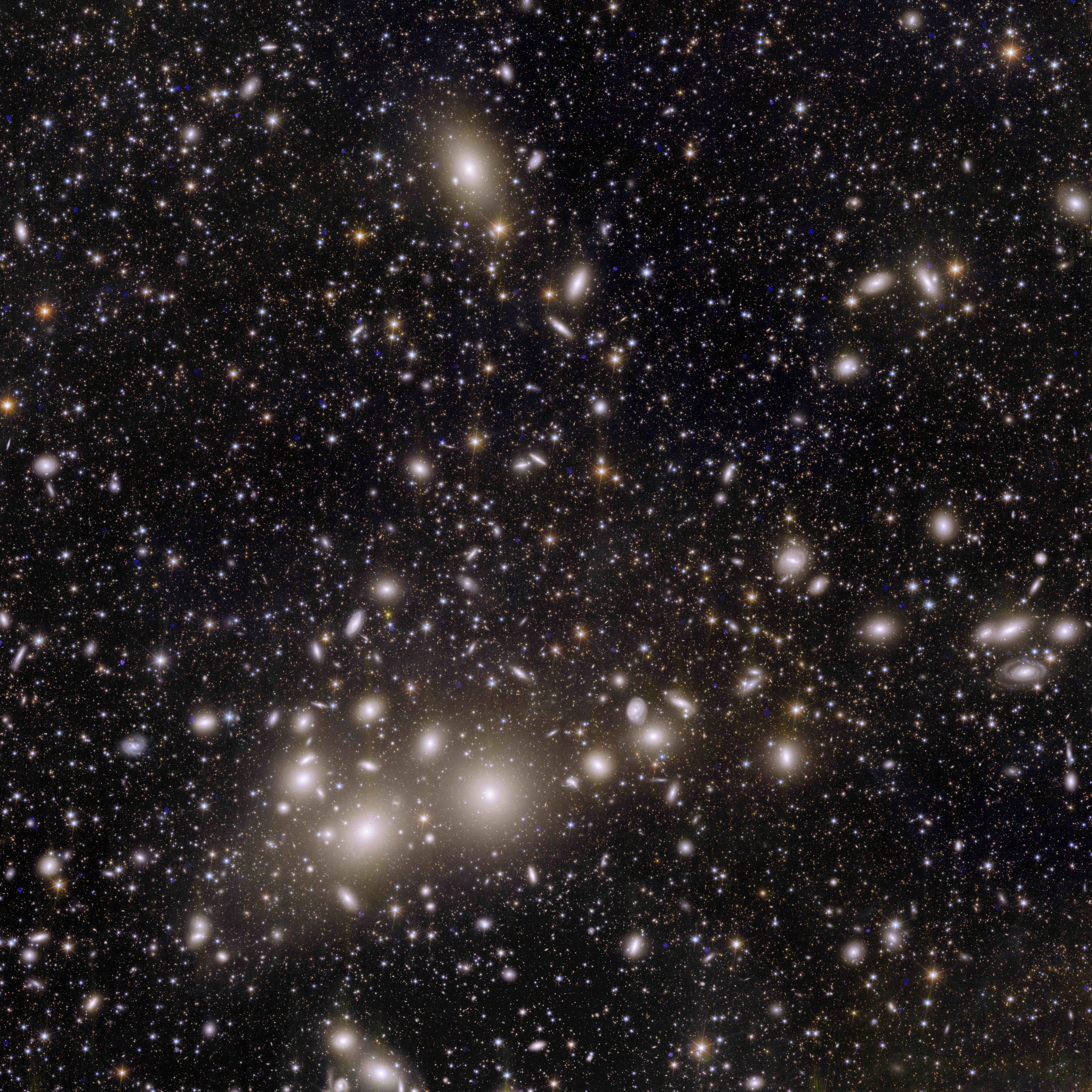
The Perseus Cluster of galaxies. Credits: ESA/Euclid/Euclid Consortium/NASA, image processing by J.-C. Cuillandre (CEA Paris-Saclay), G. Anselmi; CC BY-SA 3.0 IGO.
This incredible snapshot from Euclid is a revolution for astronomy. The image shows 1000 galaxies belonging to the Perseus Cluster, and more than 100 000 additional galaxies further away in the background. Many of these faint galaxies were previously unseen. Some of them are so distant that their light has taken 10 billion years to reach us. By mapping the distribution and shapes of these galaxies, cosmologists will be able to find out more about how dark
matter shaped the Universe that we see today. This is the first time that such a large image has allowed us to capture so many Perseus galaxies in such a high level of detail. Perseus is one of the most massive structures known in the Universe, located ‘just’ 240 million light-years away from Earth. Astronomers demonstrated that galaxy clusters like Perseus can only have formed if dark matter is present in the Universe. Euclid will observe numerous galaxy clusters like Perseus across cosmic time, revealing the ‘dark’ element that holds them together.
Spiral galaxy IC 342
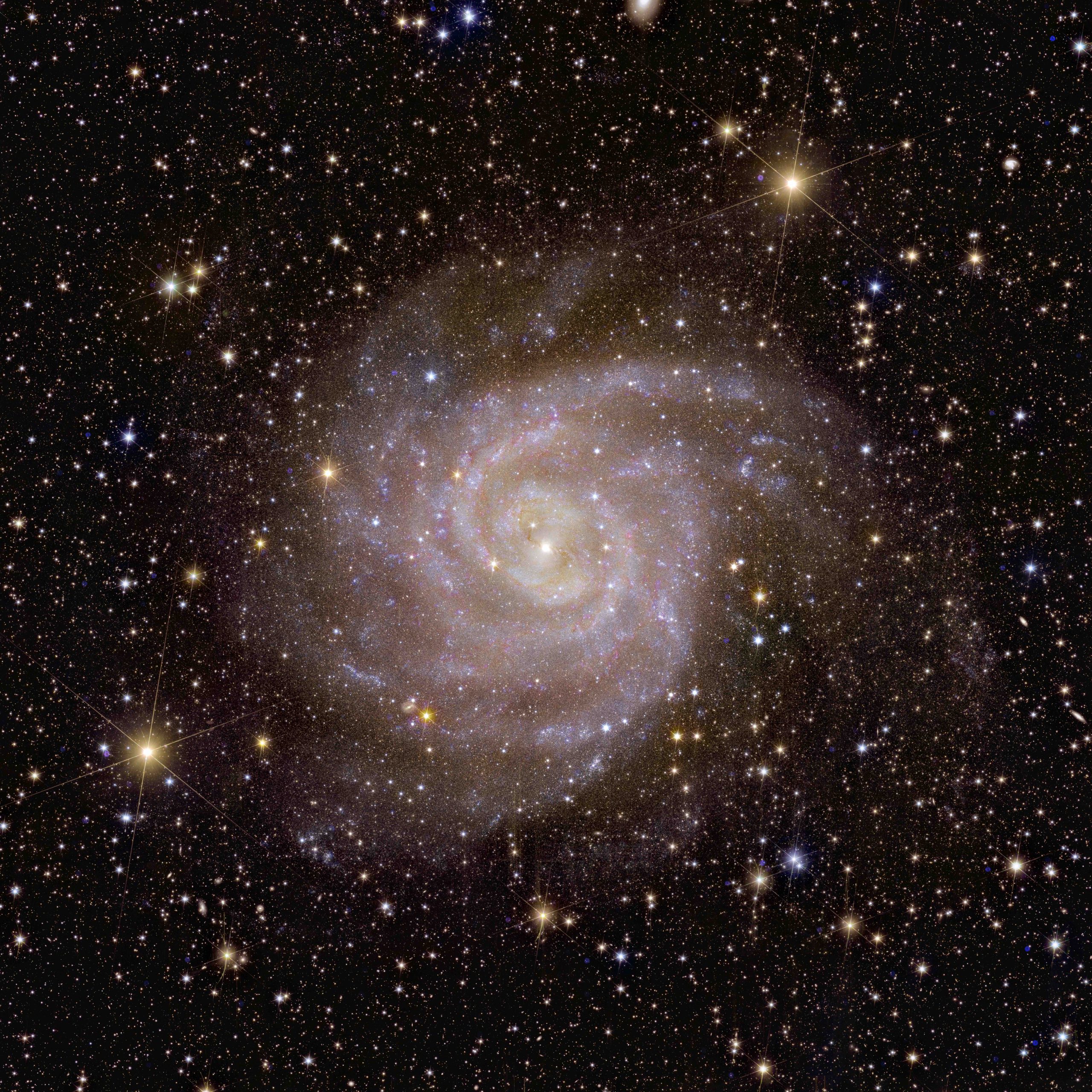
Spiral Galaxy IC 342. Credits: ESA/Euclid/Euclid Consortium/NASA, image processing by J.-C. Cuillandre (CEA Paris-Saclay), G. Anselmi; CC BY-SA 3.0 IGO.
Over its lifetime, Euclid will image billions of galaxies, revealing the unseen influence that dark matter and dark energy have on them. That’s why it’s fitting that one of the first galaxies that Euclid observed is nicknamed the ‘Hidden Galaxy’, also known as IC 342 or Caldwell 5. Thanks to its infrared view, Euclid has already uncovered crucial information about the stars in this galaxy, which is a look-alike of our Milky Way.
Irregular galaxy NGC 6822
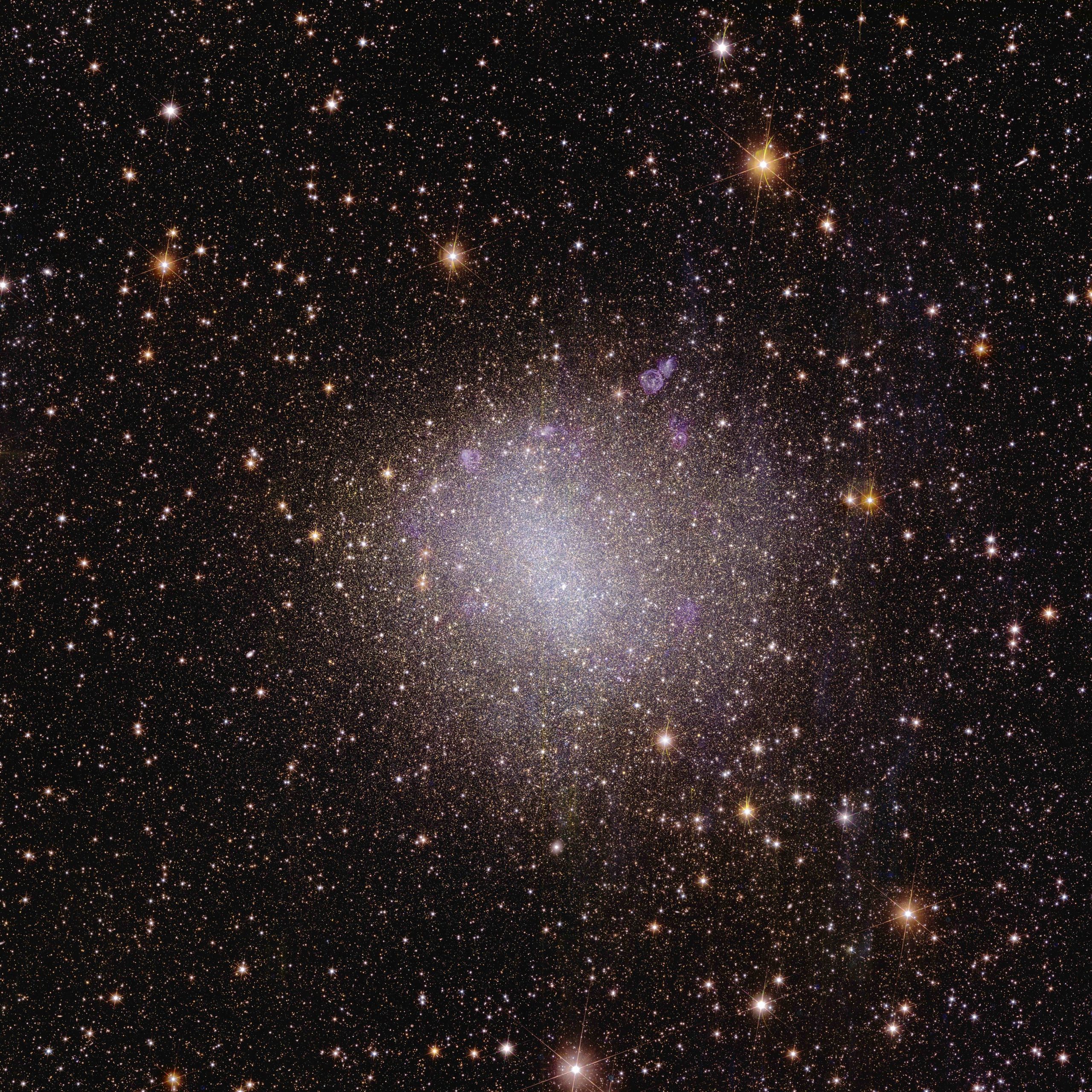
Irregular galaxy NGC 6822. Credits: ESA/Euclid/Euclid Consortium/NASA, image processing by J.-C. Cuillandre (CEA Paris-Saclay), G. Anselmi; CC BY-SA 3.0 IGO.
To create a 3D map of the Universe, Euclid will observe the light from galaxies out to 10 billion light-years. Most galaxies in the early Universe don’t look like the quintessential neat spiral, but are irregular and small. They are the building blocks for bigger galaxies like our own, and we can still find some of these galaxies relatively close to us. This first irregular dwarf galaxy that Euclid observed is called NGC 6822 and is located close by, just 1.6 million light-years from Earth.
Globular cluster NGC 6397
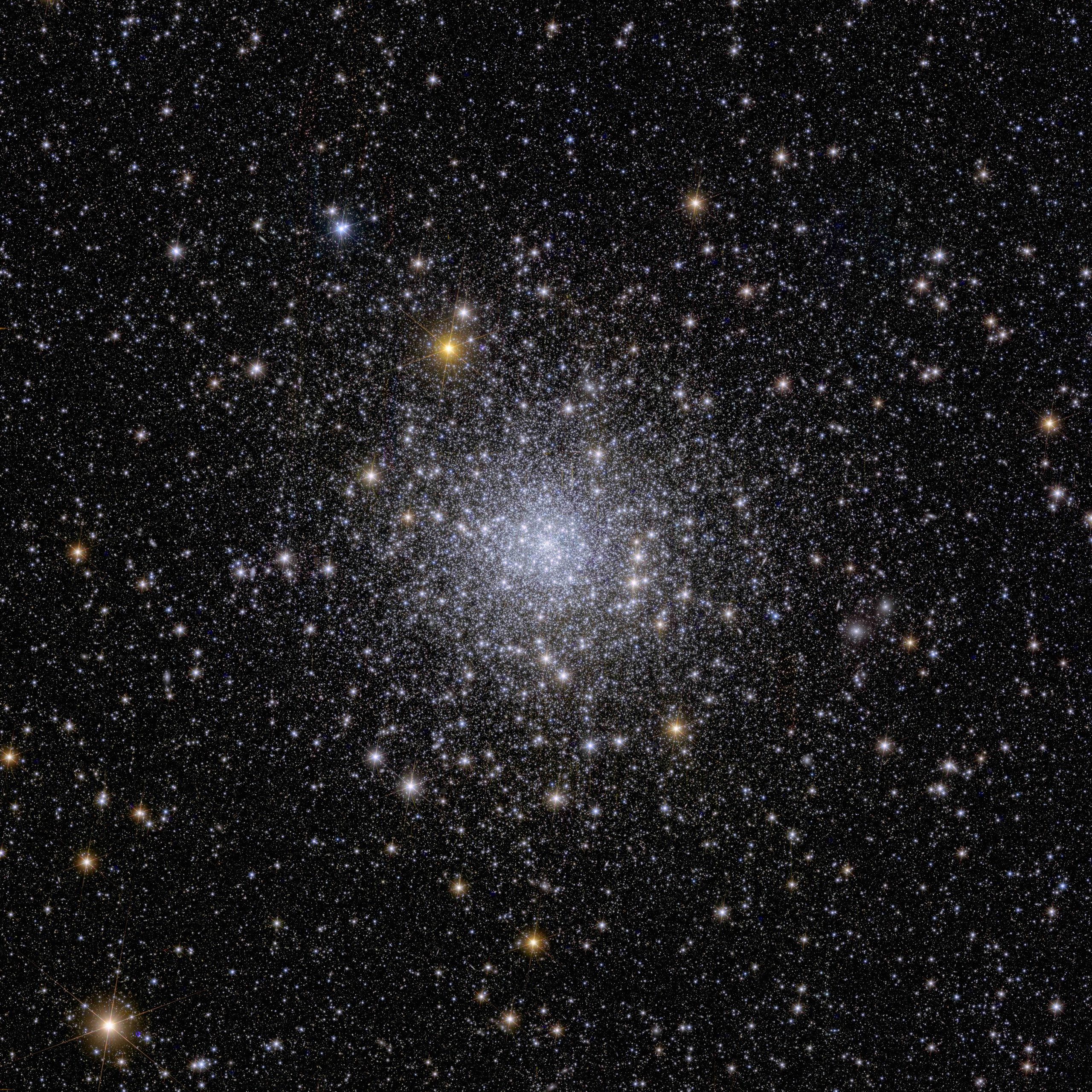
Globular cluster NGC 6397. Credits: ESA/Euclid/Euclid Consortium/NASA, image processing by J.-C. Cuillandre (CEA Paris-Saclay), G. Anselmi; CC BY-SA 3.0 IGO.
This sparkly image shows Euclid’s view on a globular cluster called NGC 6397. This is the second-closest globular cluster to Earth, located about 7800 light-years away. Globular clusters are collections of hundreds of thousands of stars held together by gravity. Currently no other telescope than Euclid can observe an entire globular cluster in one single observation, and at the same time distinguish so many stars in the cluster. These faint stars tell us about the history of the Milky Way and where dark matter is located.
The Horsehead Nebula
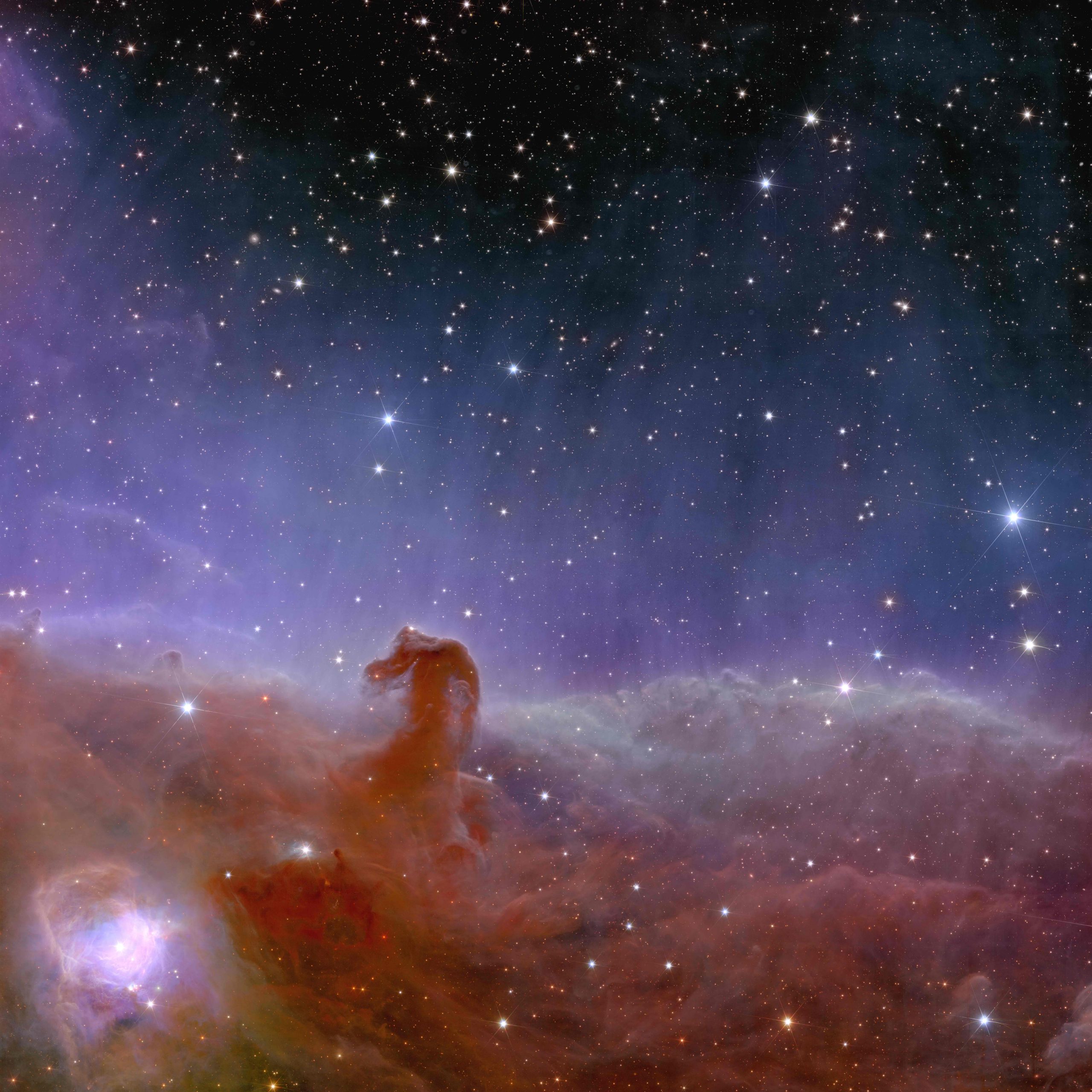
Horsehead Nebula. Credits: ESA/Euclid/Euclid Consortium/NASA, image processing by J.-C. Cuillandre (CEA Paris-Saclay), G. Anselmi; CC BY-SA 3.0 IGO.
Euclid shows us a spectacularly panoramic and detailed view of the Horsehead Nebula, also known as Barnard 33 and part of the constellation Orion. In Euclid’s new observation of this stellar nursery, scientists hope to find many dim and previously unseen Jupiter-mass planets in their celestial infancy, as well as young brown dwarfs and baby stars.
“In the first images of Euclid we are already obtaining that expectations are exceeded, allowing us to go beyond what was expected in the limits of detection. We are sure that, in the coming years, Euclid will help us discover an unprecedented number of dark ultracold objects of substellar mass, facilitating a great advance in the investigation of their curious properties and it is even possible that we can reveal their mysterious origin,” says Eduardo Martín Guerrero de Escalante, IAC research professor, principal investigator of this Euclid image and one of the two Euclid mission Independent Legacy Scientists.
New discoveries, soon
Each image individually contains a wealth of new information about the nearby Universe. “In the coming months, scientists in the Euclid Consortium will analyse these images and publish a series of scientific papers in the journal Astronomy & Astrophysics, together with papers about the scientific objectives of the Euclid mission and the instrument performance,” adds Yannick Mellier, Euclid Consortium lead. Euclid launched to the Sun-Earth Lagrange point 2 from Cape Canaveral Space Force Station in Florida, USA, on 1 July 2023. In the months after launch, scientists and engineers have been engaged in an intense phase of testing and calibrating Euclid’s scientific instruments. The team is doing the last fine-tuning of the spacecraft before routine science observations begin in early 2024. Over six years, Euclid will survey one third of the sky with unprecedented accuracy. As the mission progresses, Euclid’s bank of data will be released once per year, and will be available to the global scientific community via the Astronomy Science Archives hosted at ESA’s European Space Astronomy Centre in Spain.
More Information
Euclid is a space mission of the European Space Agency (ESA) with contributions from the National Aeronautics and Space Administration (NASA). It is the second M-class mission in ESA’s Cosmic Vision programme.
The visible instrument (VIS) and the Near Infrared Spectrometer and Photometer (NISP) instrument were developed and built by a consortium of scientists and engineers from 15 countries, many from Europe, but also from the USA, Canada and Japan.
Spain has an important involvement in the mission, with a prominent role in the Consortium that has led the mission from its origin. The ICE-CSIC, the IFAE and the IEEC have been involved since 2006 in the initial concepts of the mission and have been responsible for the design, construction, assembly and validation tests of the Filter Wheel Assembly (FWA) of the NISP instrument. Together with PIC they are responsible for the cosmological simulation effort in the Euclid mission. The Polytechnic University of Cartagena (UPCT), in collaboration with the Instituto de Astrofísica de Canarias (IAC), has been responsible for the design, construction and validation of the control electronics of the NISP Instrument.
In addition, around 80 European companies participate in Euclid, of which 9 are Spanish, including Airbus, Alter Technology, Crisa, Deimos Space, GTD, Navair, Sener and Thales Alenia Space Spain. In more than 20 Spanish institutions, there are around 100 scientists preparing the scientific exploitation of the mission to unravel the mysteries of the dark universe.
Video Euclid: https://youtu.be/vTnoPZzcxa0?si=e5flDh2Re4qMASei
